Sketch Style - Thoughts and Results
If you haven't previously seen any of Matt DiPietro's sketch style miniature painting, let's pause here. Take a minute and go read this blog (or at least look at the pictures of the painted minis):
http://www.contrastminiatures.com/learn/sketching/learning-to-sketch-an-overview/
The principle achievement of switching to Sketch Style is that my time to paint a model has gone from two to three nights down to one. Three to six hours down to two. While there is a difference in quality, it is not so dramatic as to be disappointed with the final result. That is what has sold me on the approach.
It is a truly unique style that focuses on value contrast over all else. Seriously, over everything else. Smoothness, blending, all of the crap that's a "sign of a great painter" is ignored. Look at the results he produces and tell me that he isn't a great painter...
So here's Greyscales, my very first attempt at sketch style. In total, he took around three and a half hours over two days. Much of that time was simply learning, making mistakes, and choosing colors. However, I think he's a great result.
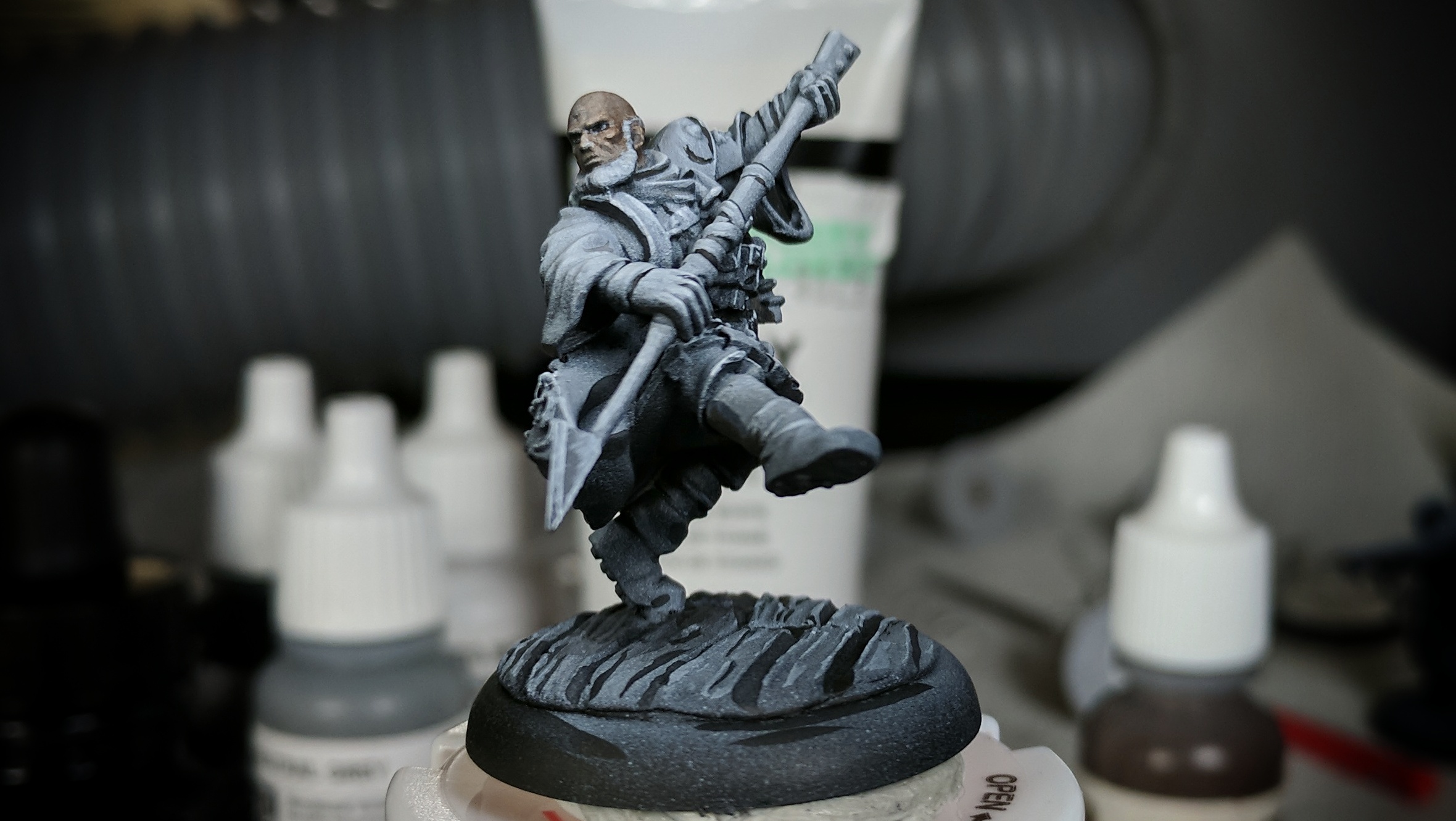
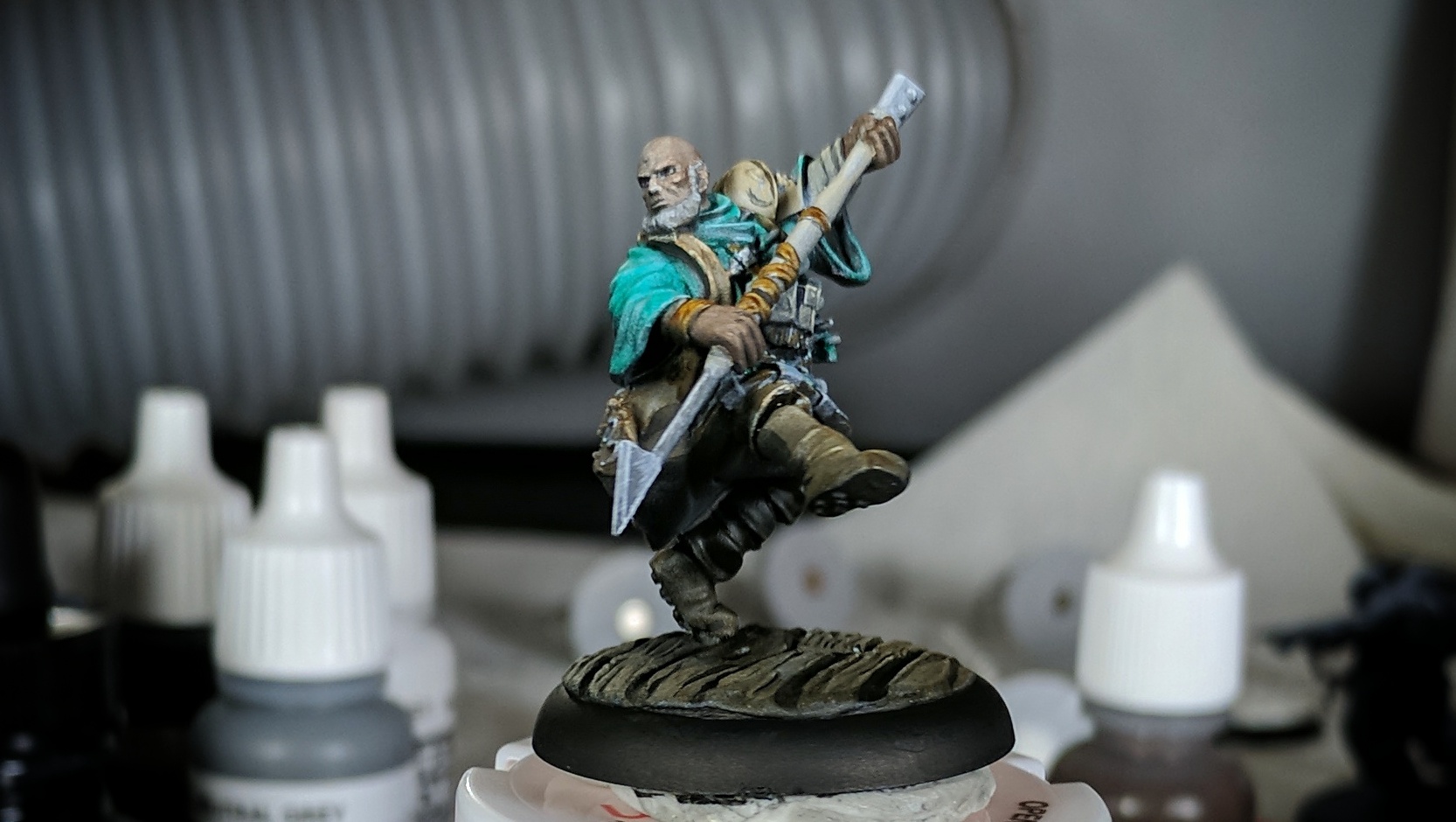
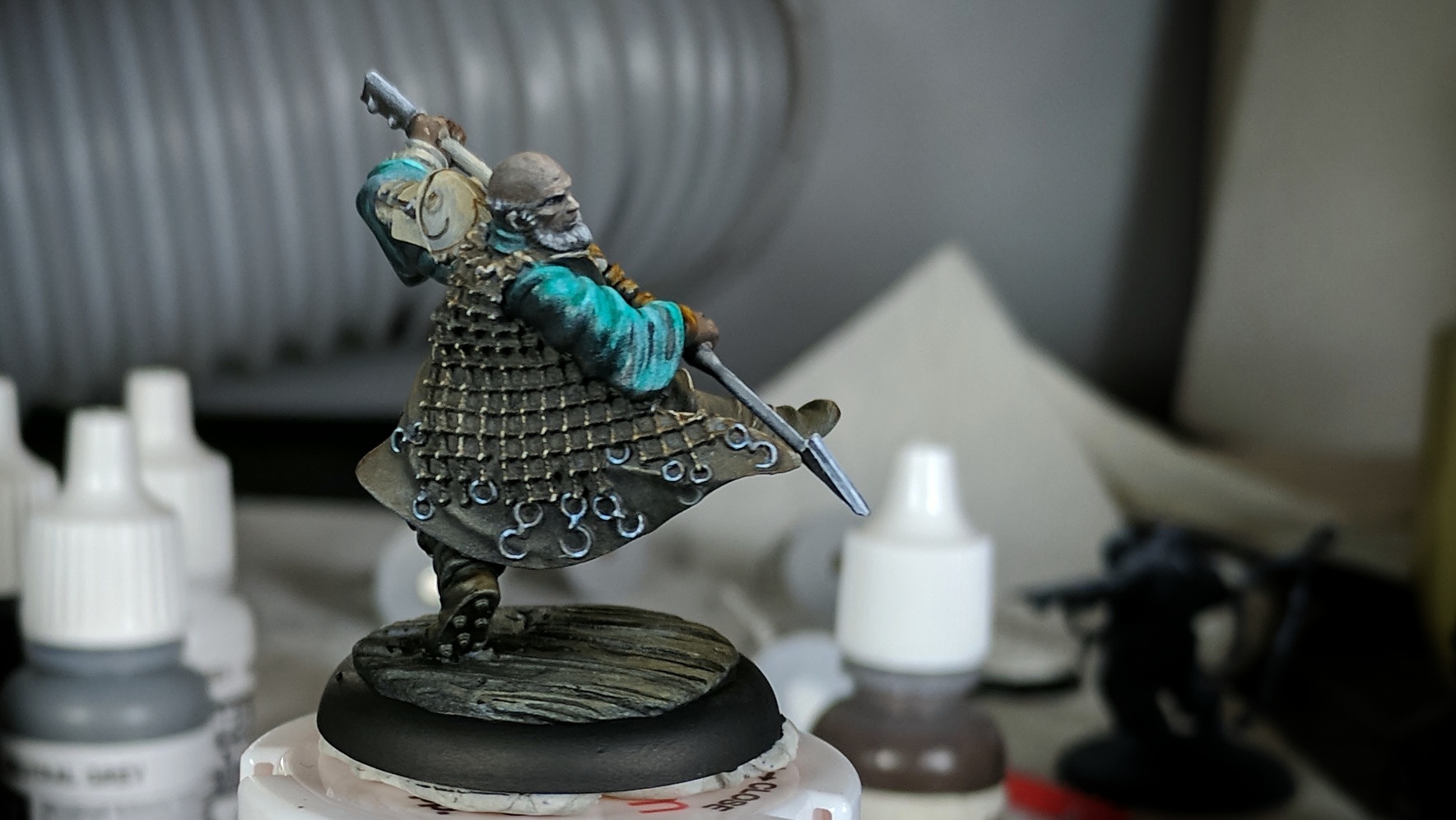
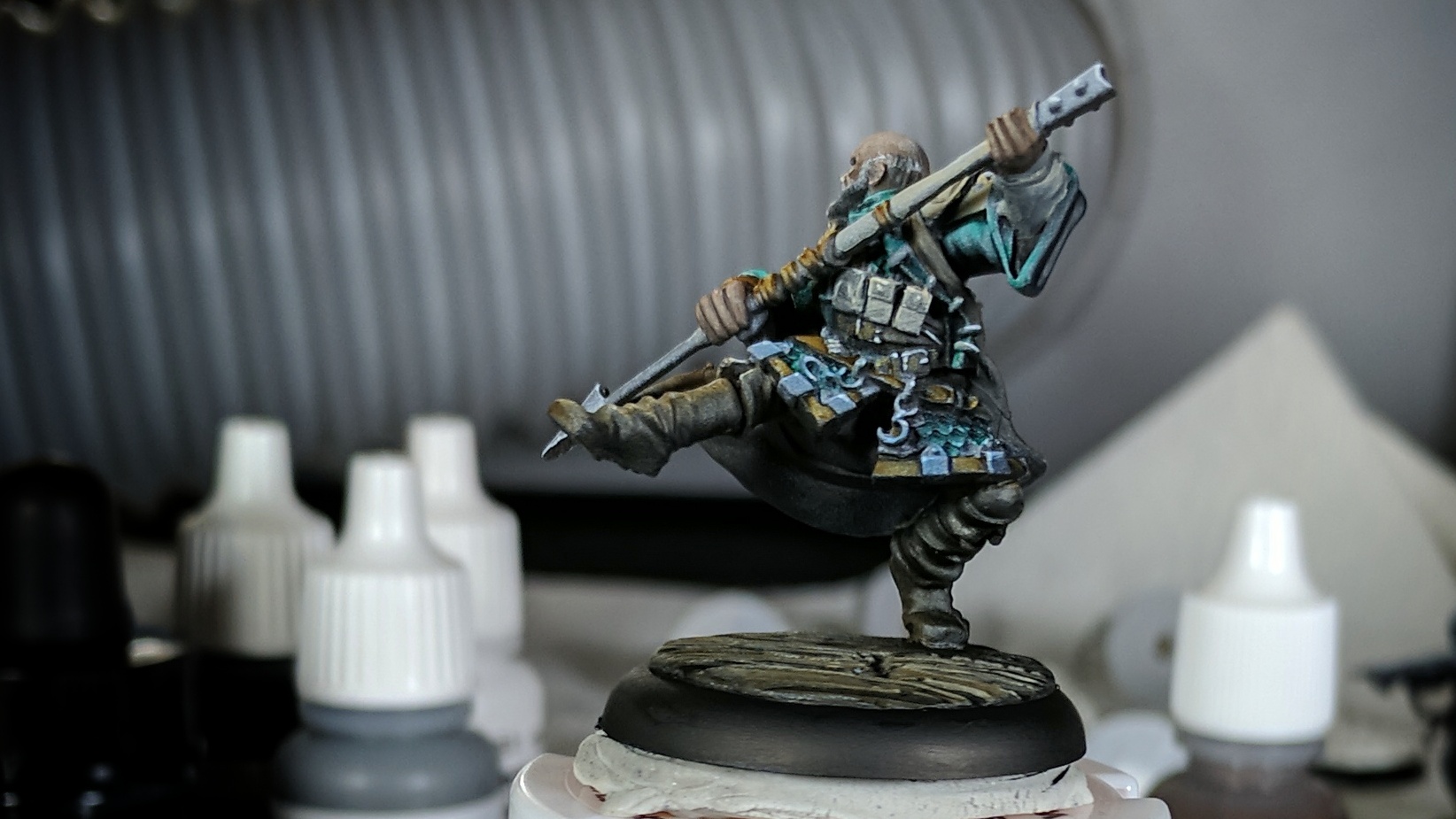
I waffle back and forth between the style being a true paradigm shift, or just a re-focusing of painting efforts. If i have to simply pick one, it would fall in the paradigm shift category. Here's why.
My traditional formula has been prime, base coat until even in a mid tone, shade, and then highlight. Base coating in particular is massively time consuming, and can be horribly frustrating. I started using the airbrush to speed up base coating as well as help with the shading and that does help to speed the process up. The focus of this approach is always on individual pieces of the model, with an inexplicable exo-ambient light source the justification for the highlight. As I painted in my previous style, I was constantly focusing on two things at once: lighting and color.
Due to the daily average humidity of 25%, I could not apply many of the more advanced blending techniques such as wet blending to make the transitions as smooth as I would like. Paint begins to dry the second that I pick it up from the wet palette, and leaves coffee stains on models if I brush over it more than once within about three seconds. This leaves glazing as the best approach for smooth blending, which means significant time consumption. On average, I was spending five hours over three nights per model.
As I write the description of my previous painting style, I realize that it really isn't that advanced. It's the product of self-training, YouTube videos, and a few years of practice. Perhaps simply receiving instruction (albeit in video form via Miniature Monthly) and trying to follow that approach is enough to justify the difference in quality.
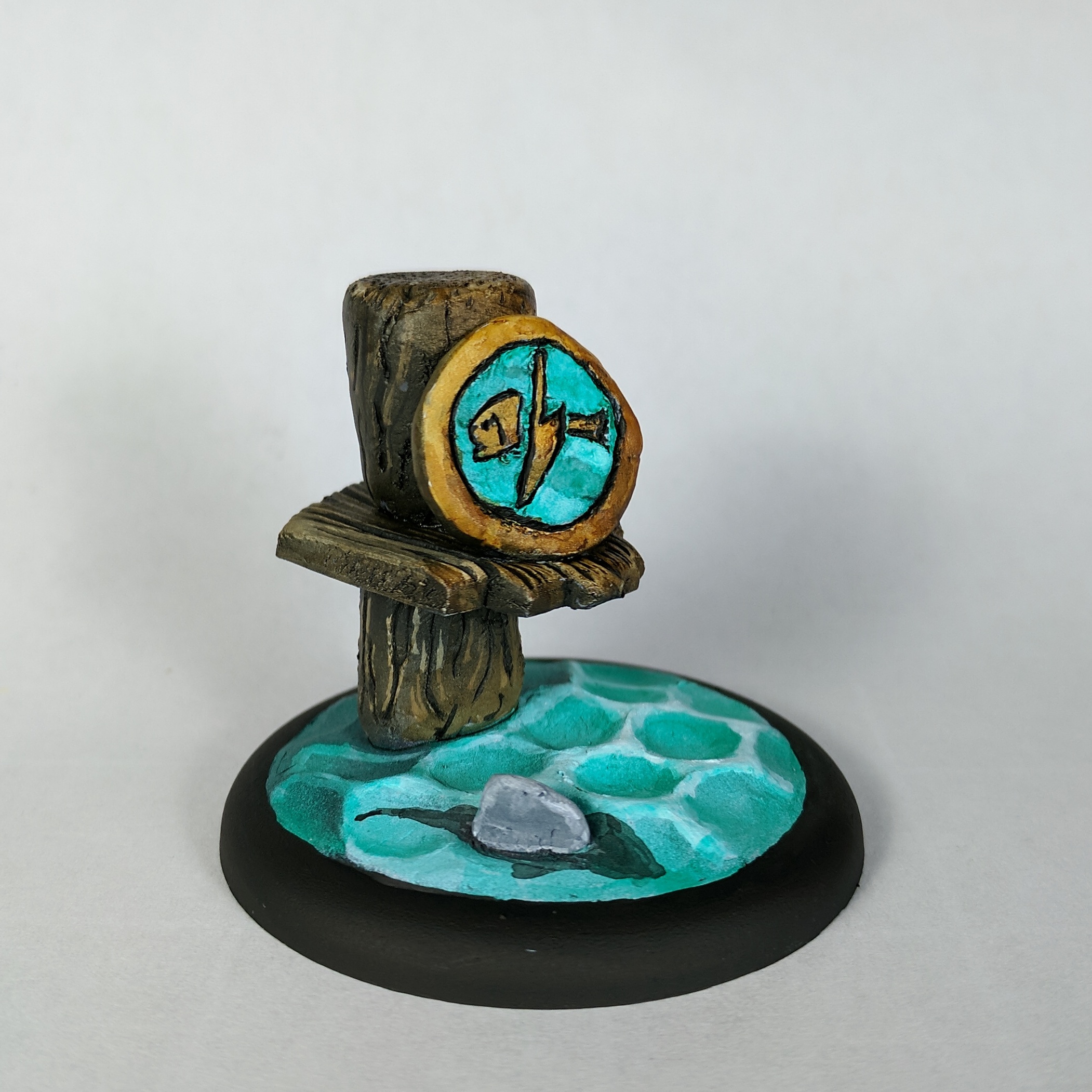

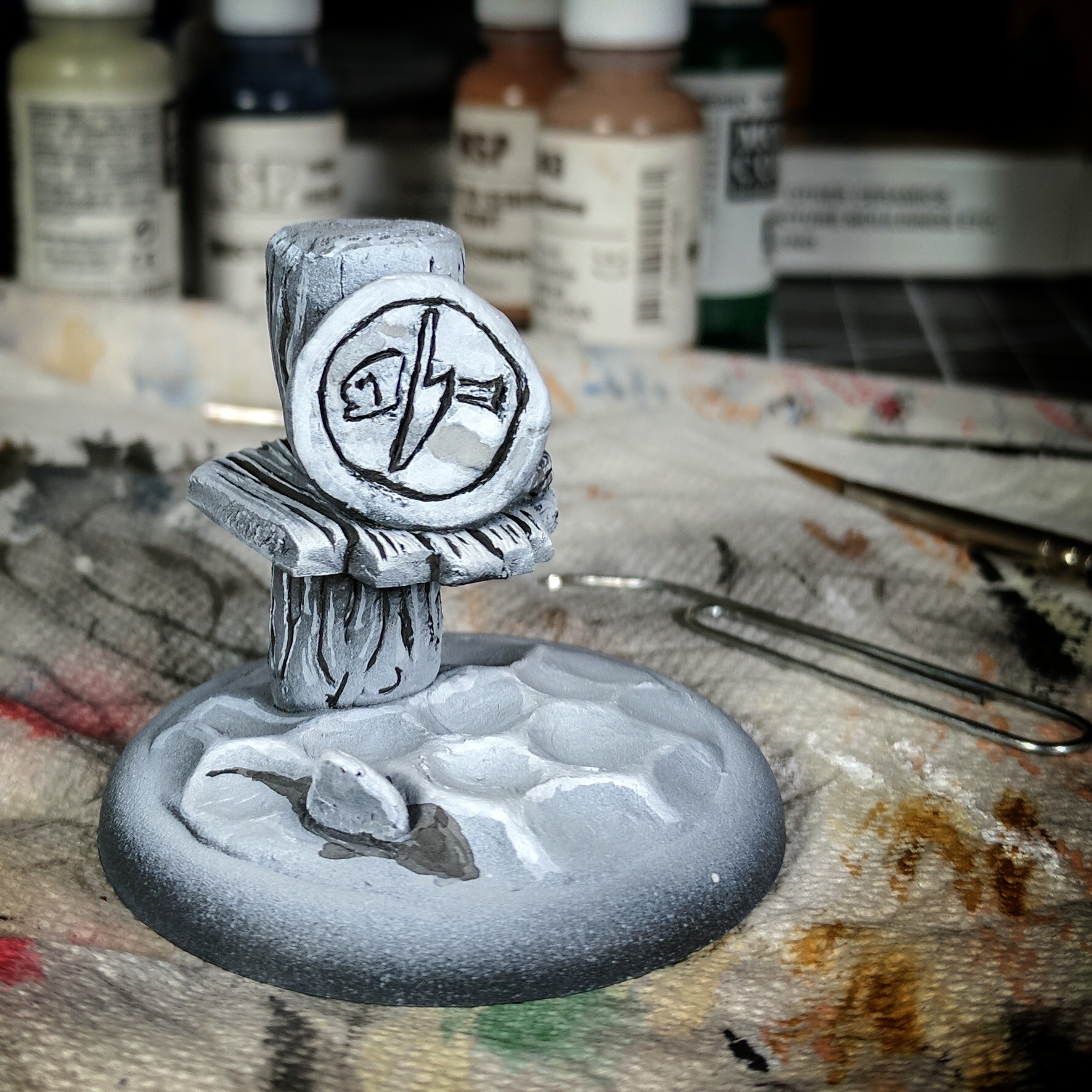




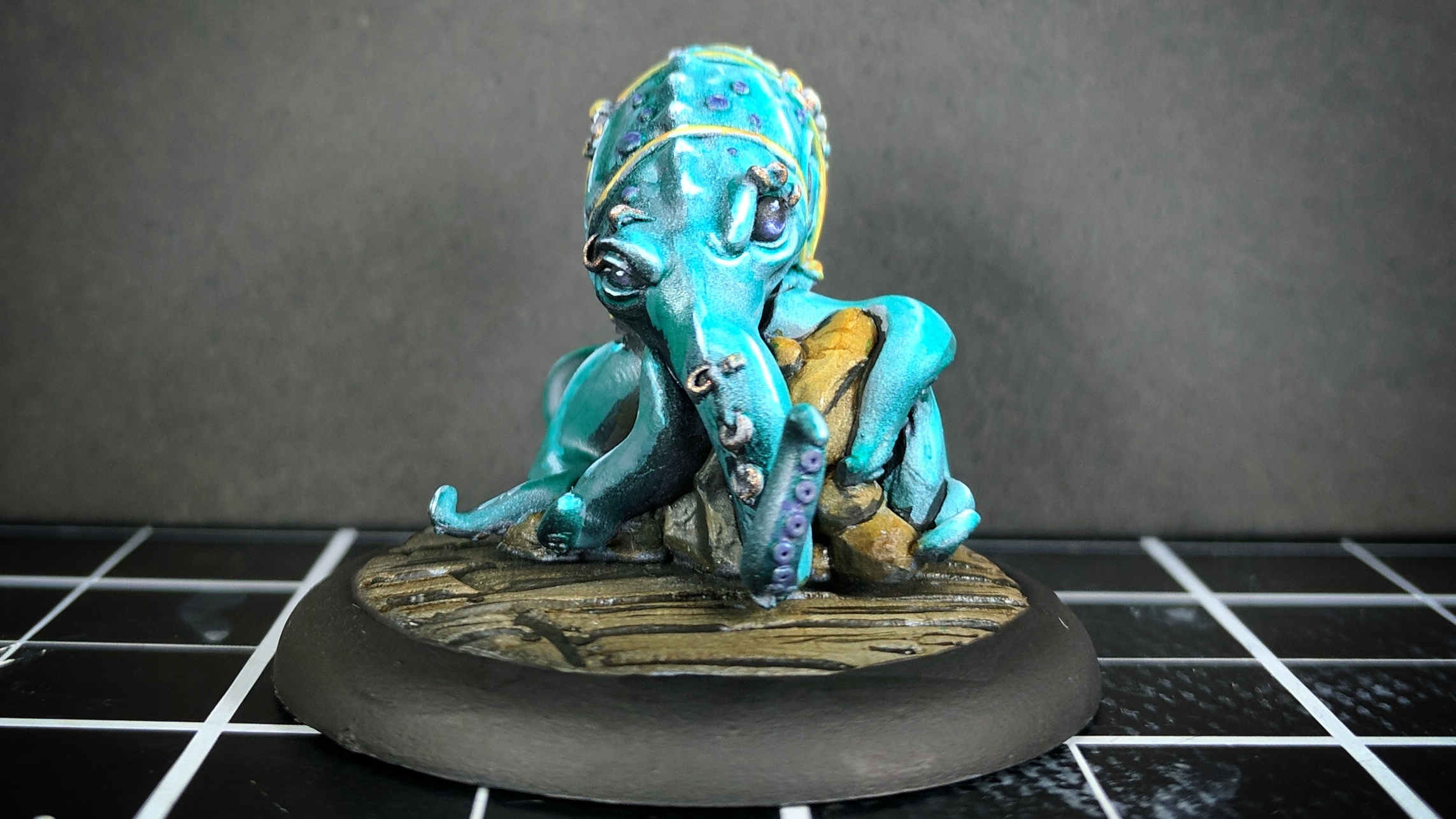
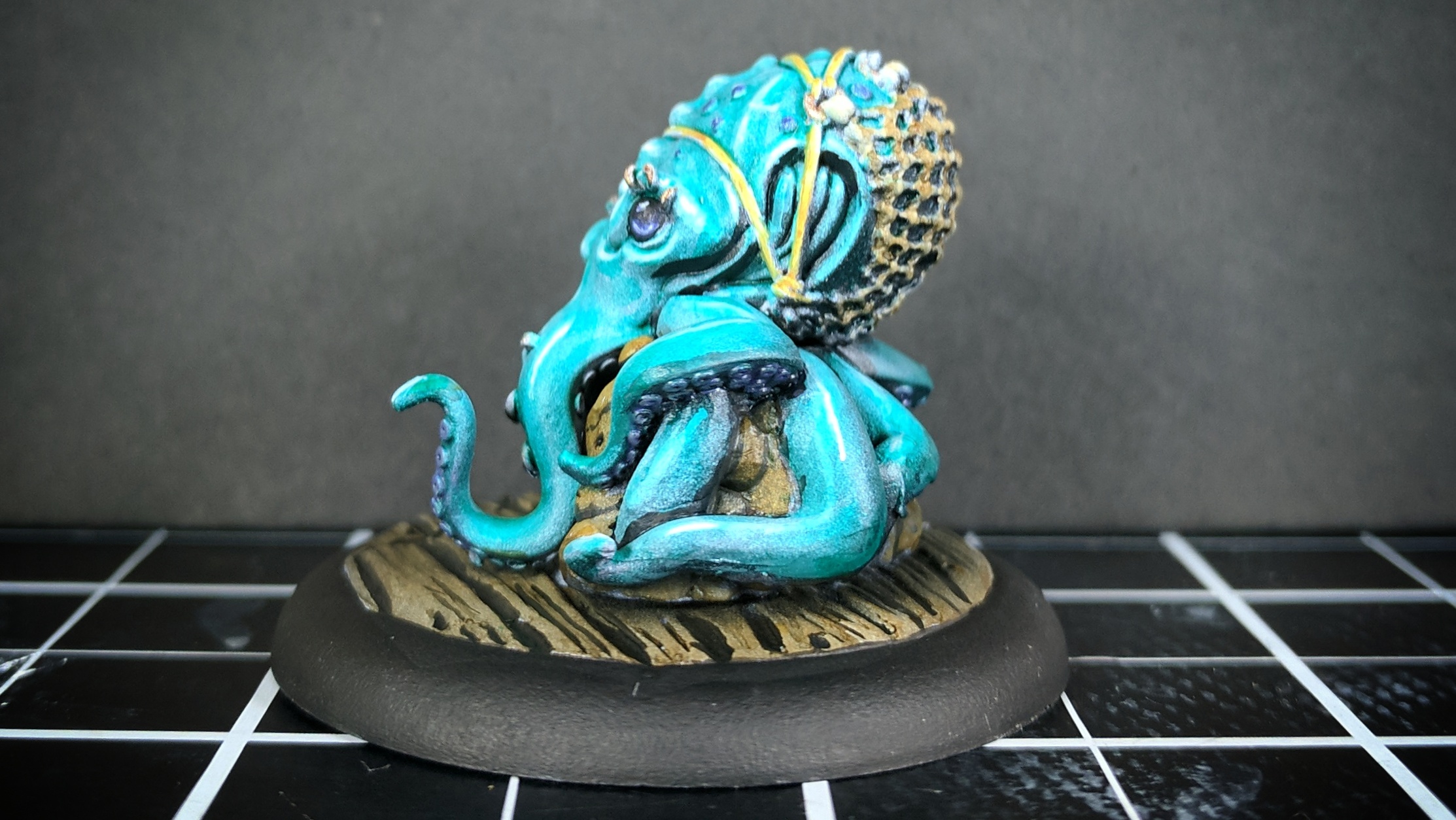

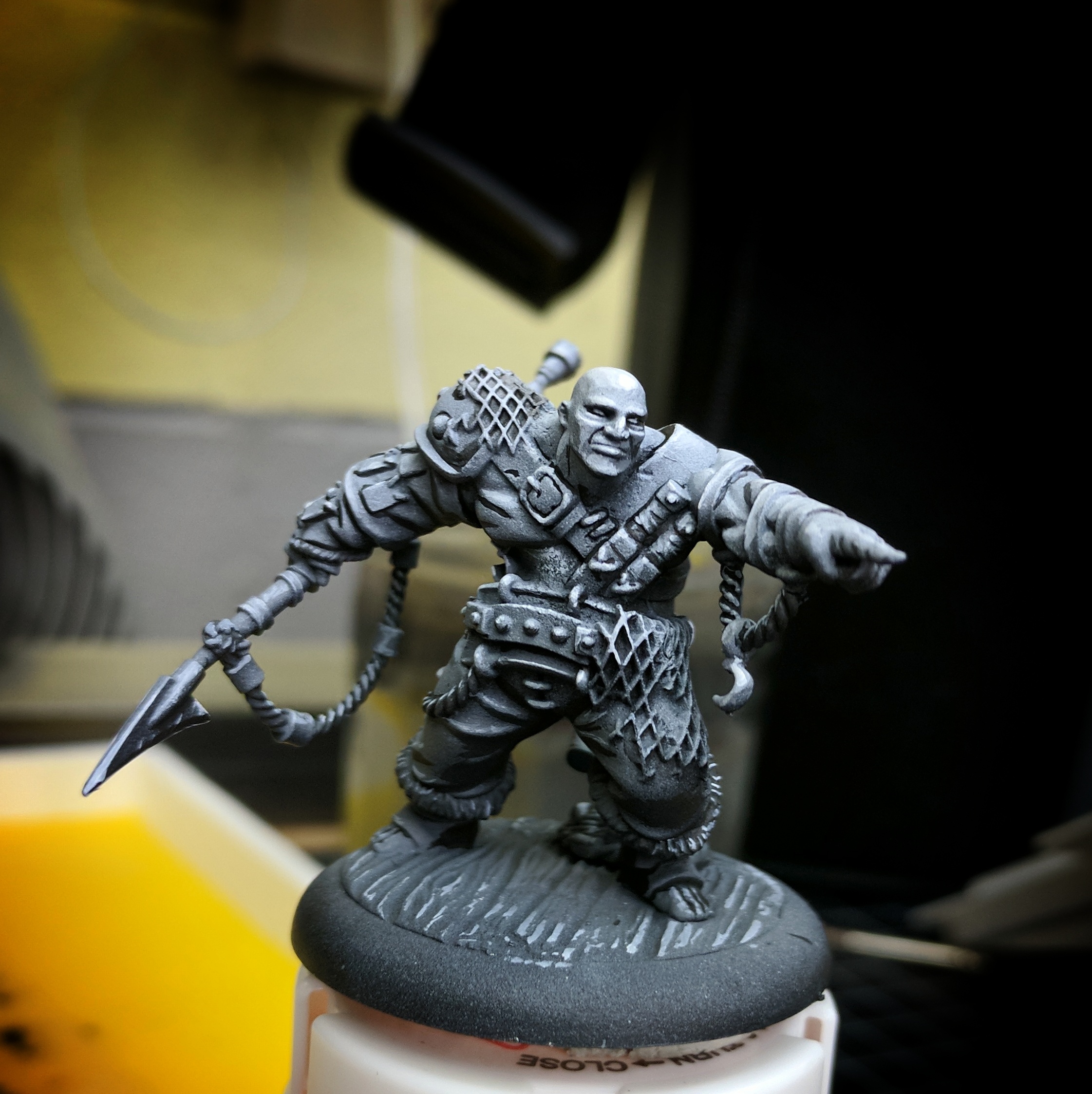
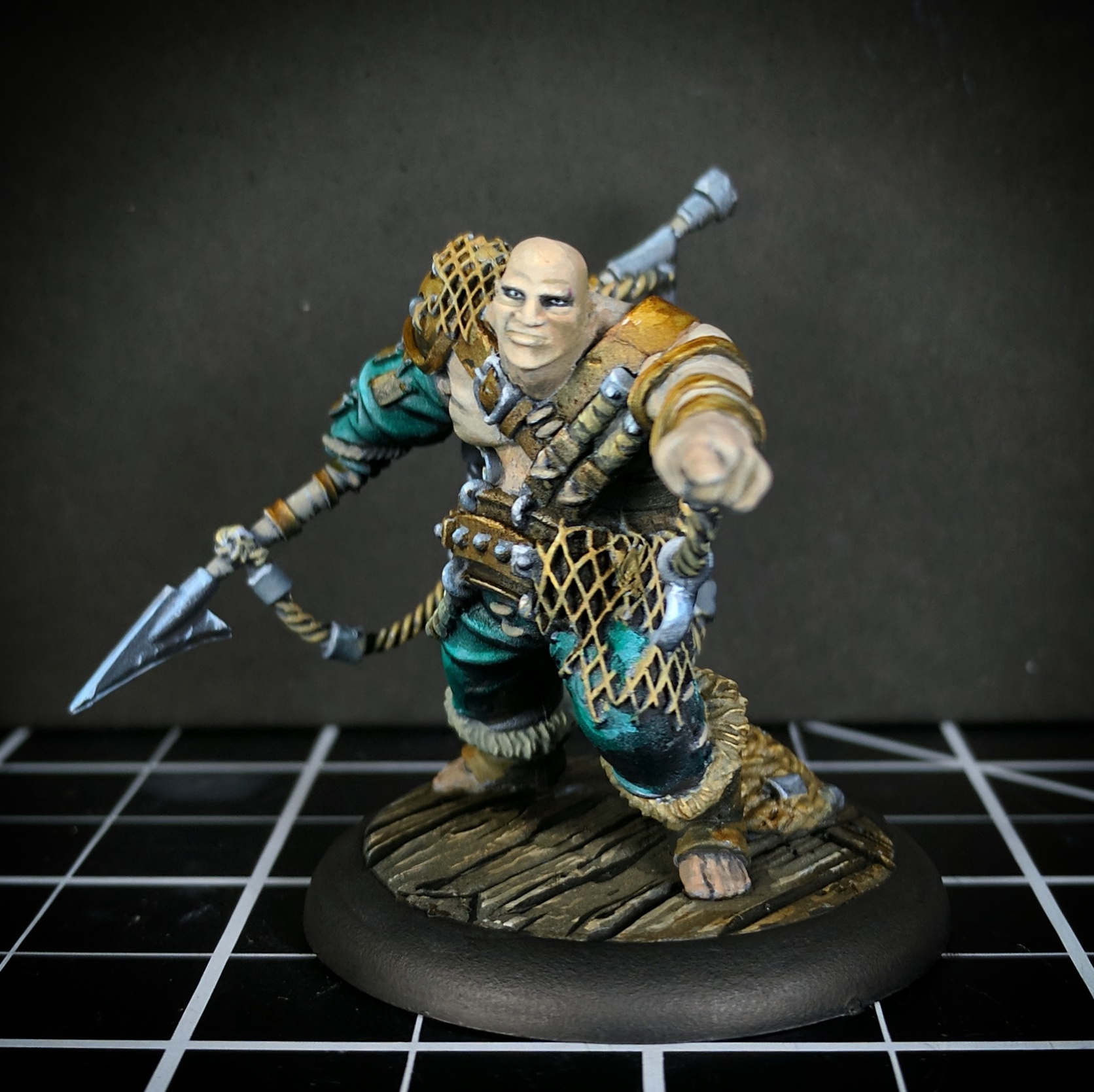
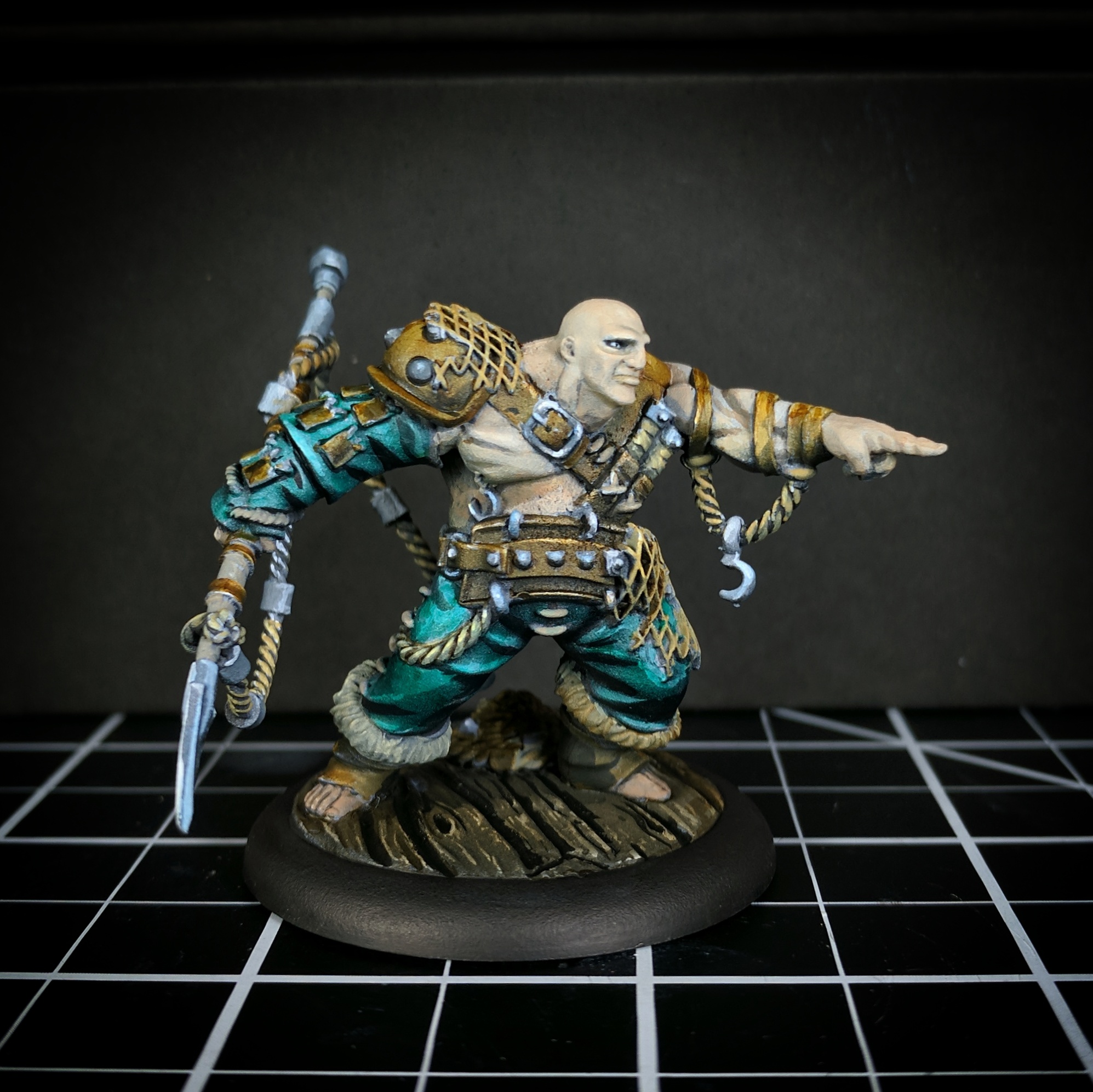
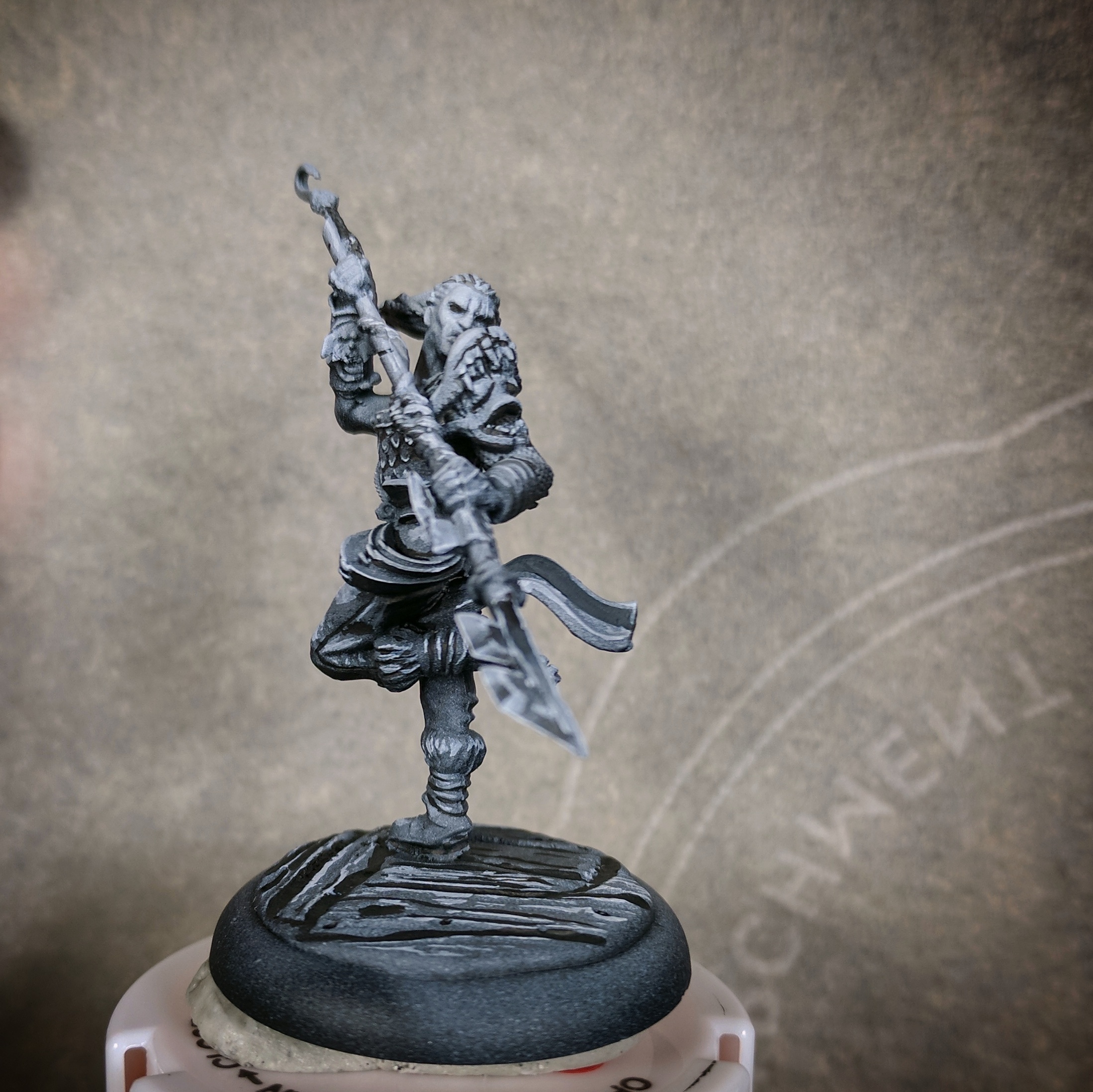
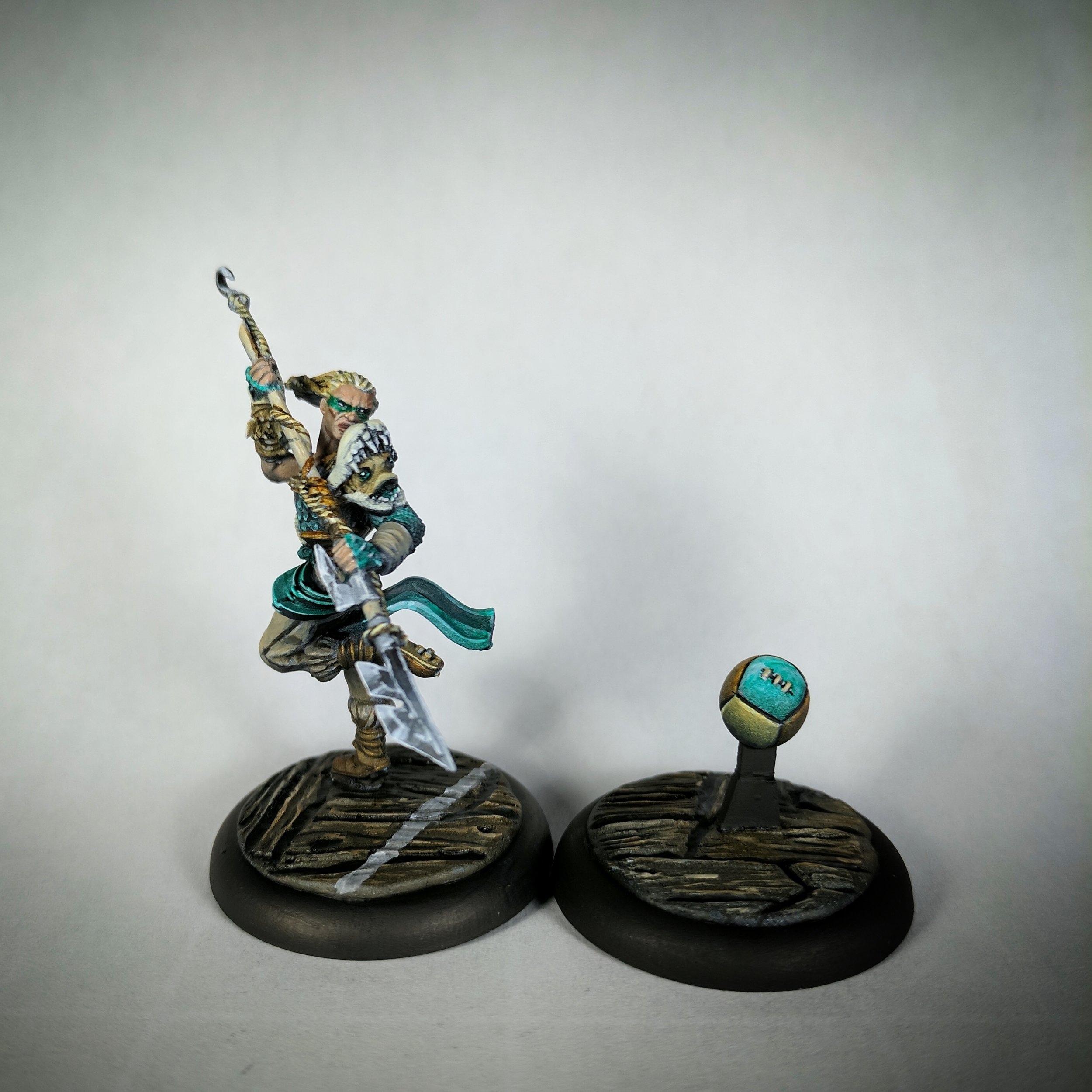
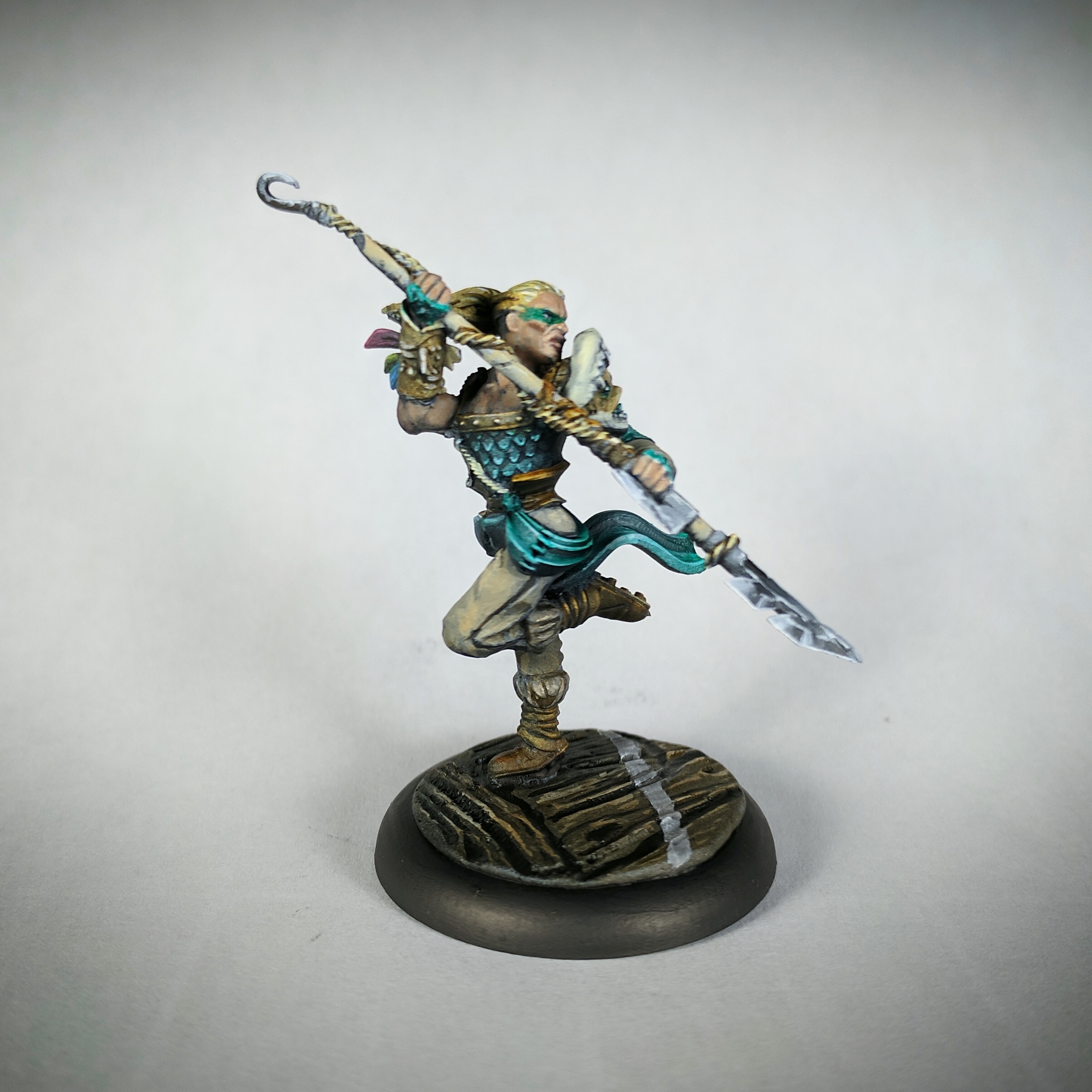
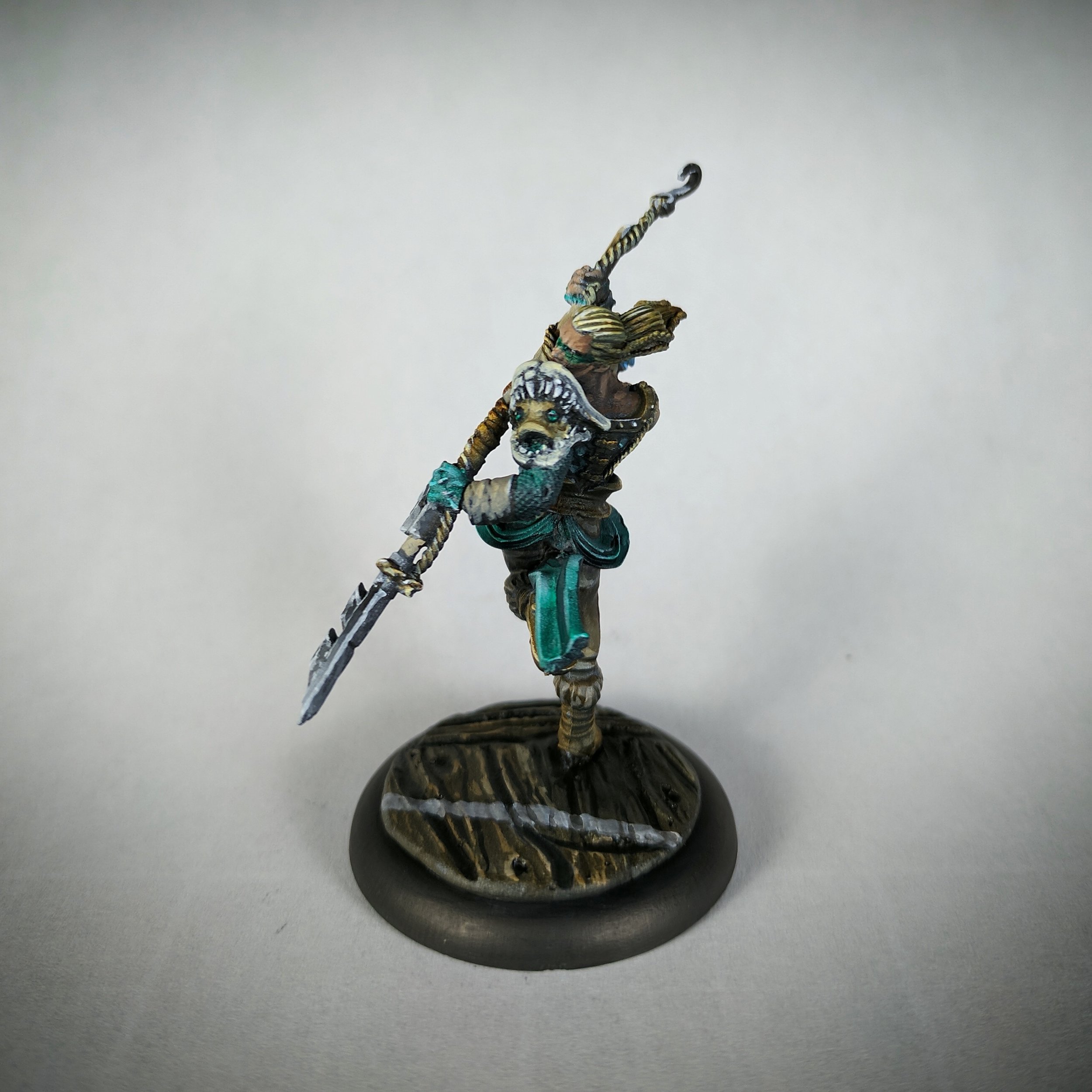
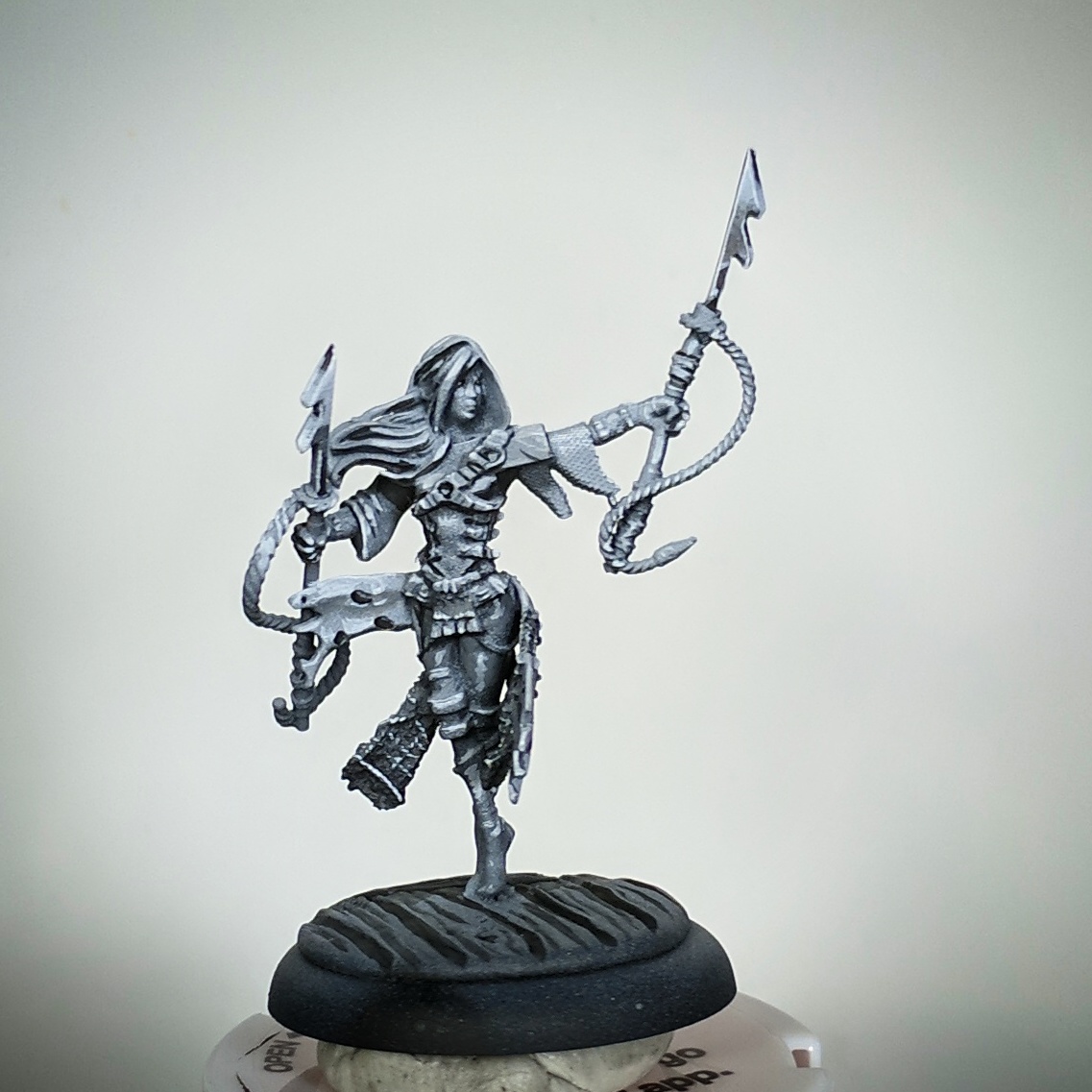
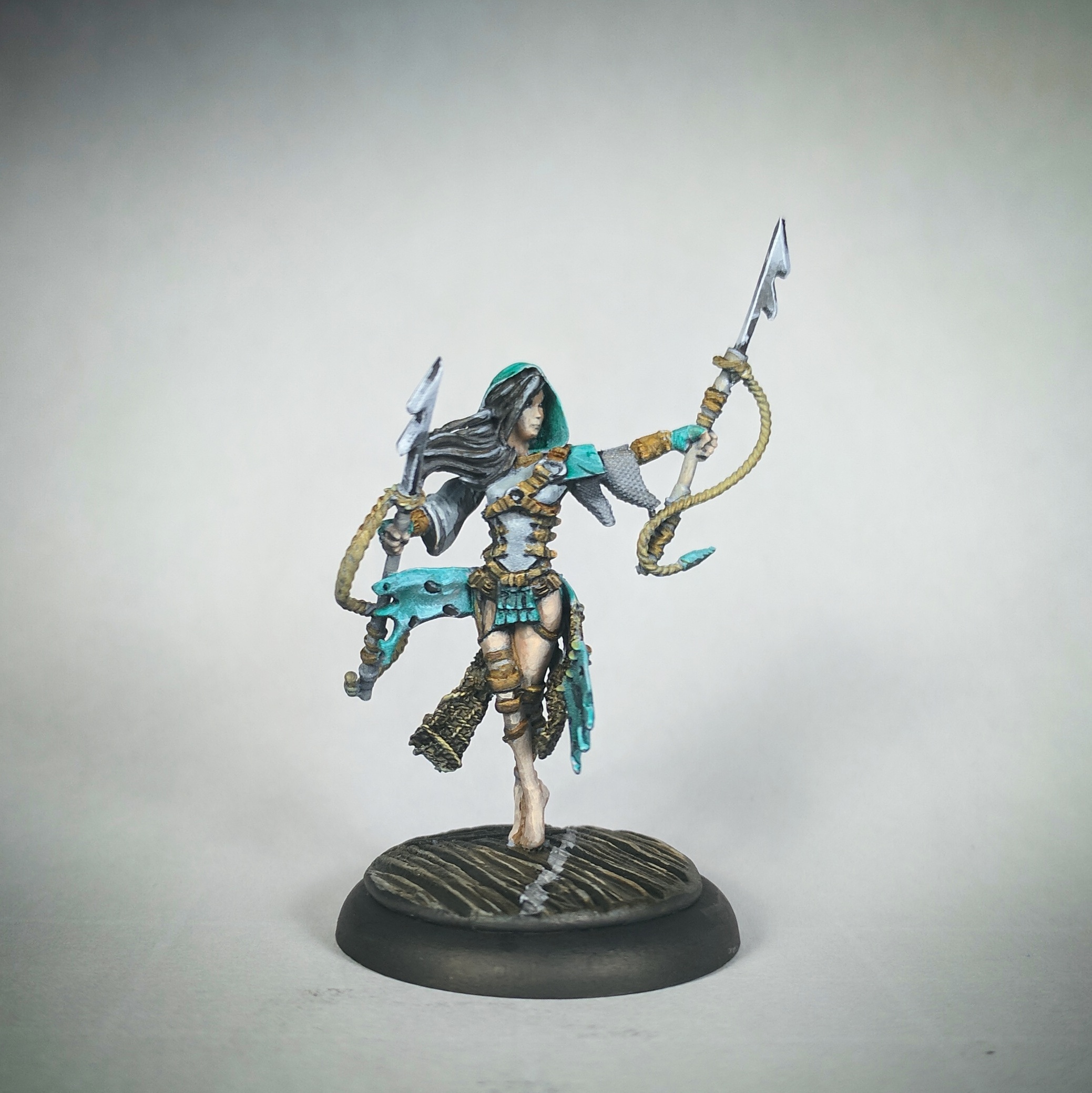
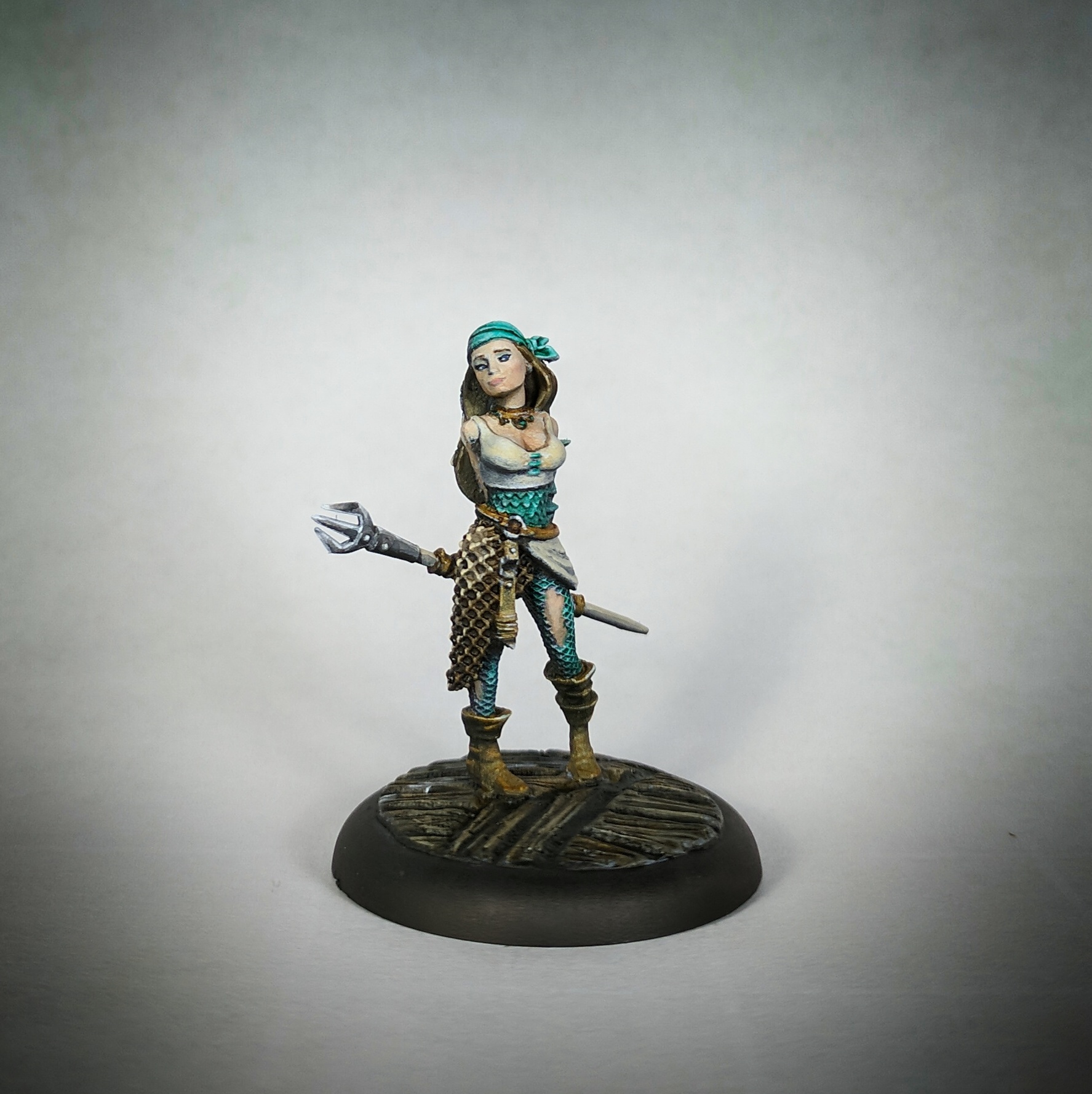
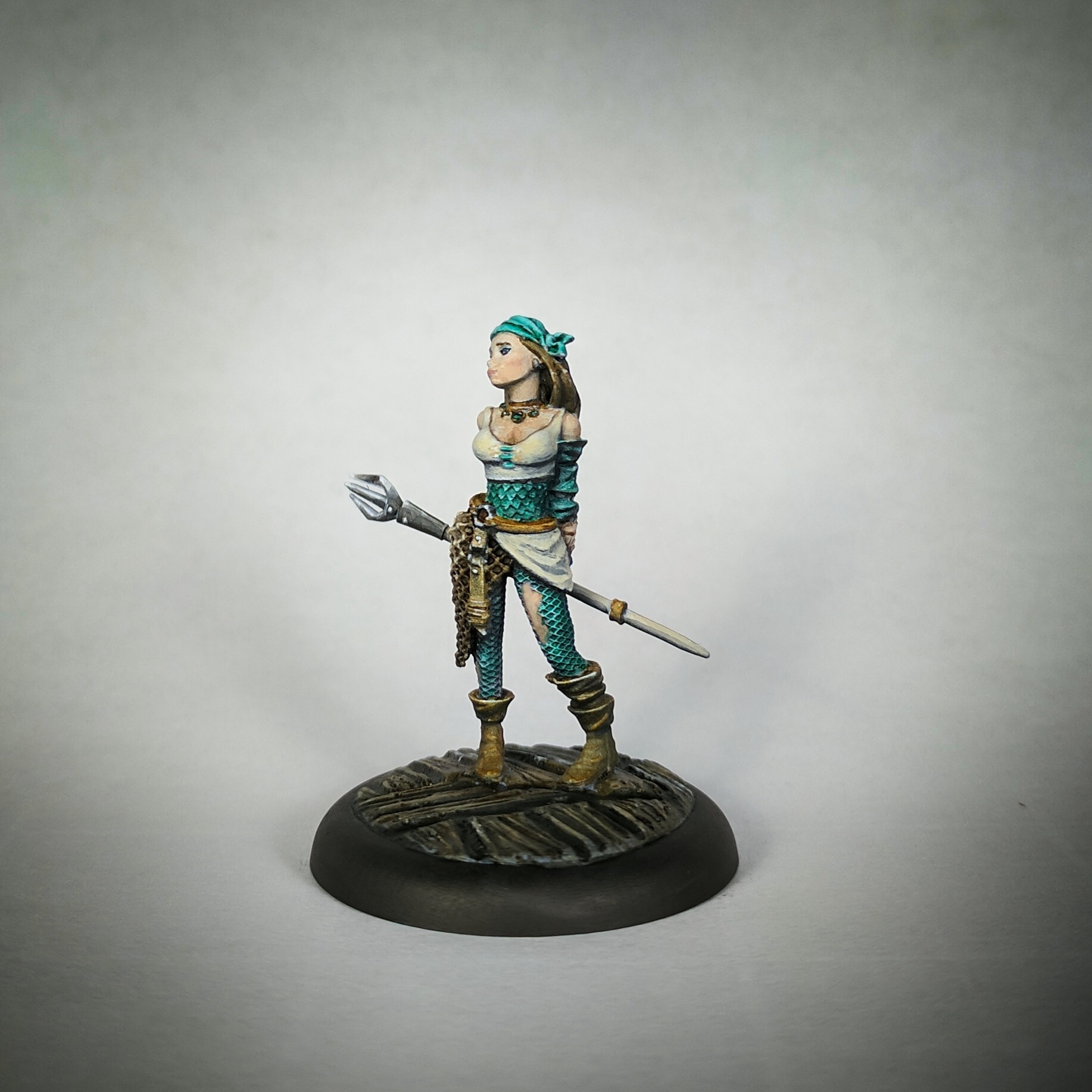
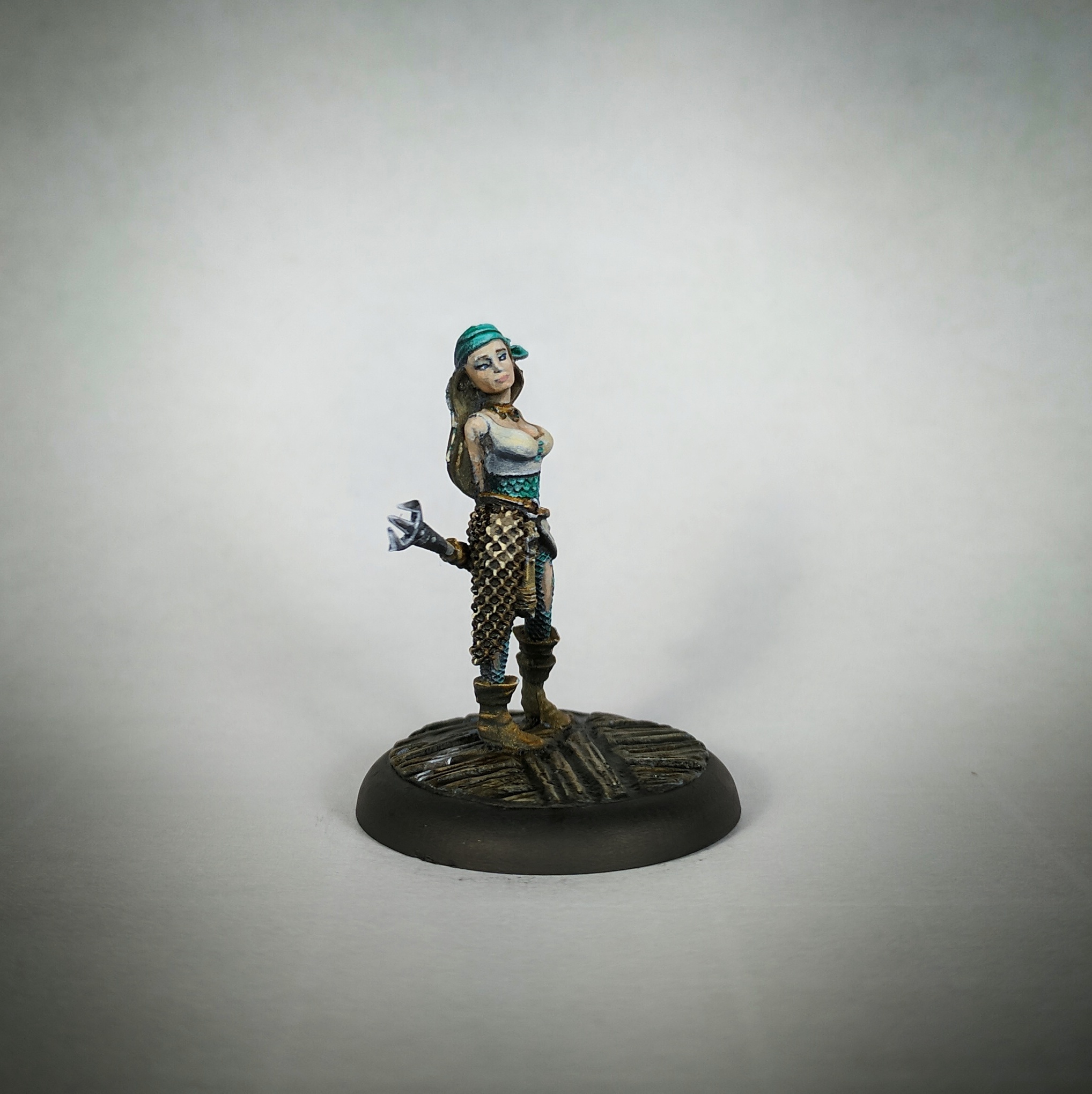
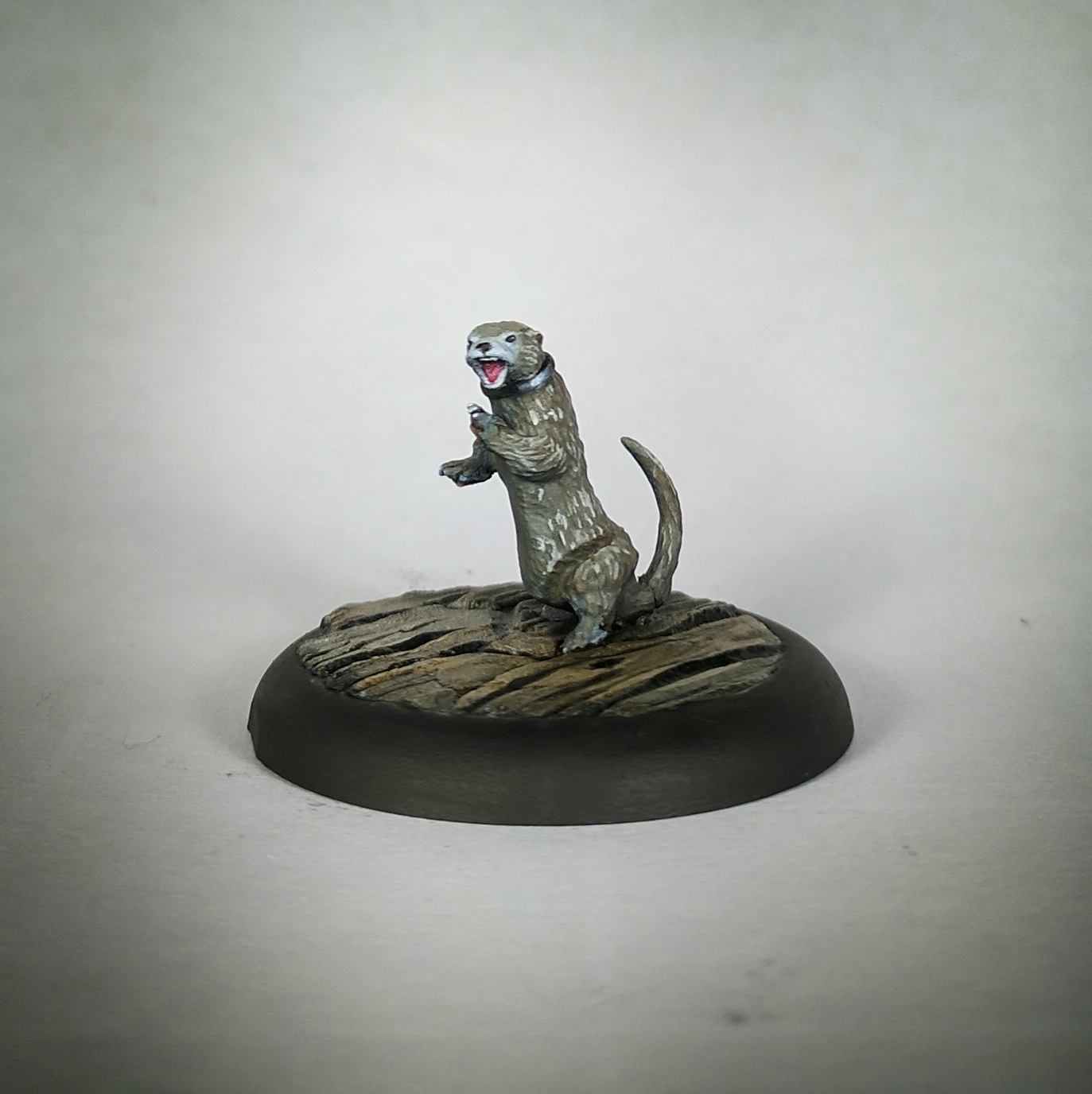
The paradigm shift in transitioning to Sketch Style is that you break it down to focus on one aspect of the miniature at a time. What this really means is that you're doing either lighting or color, not both simultaneously. Instead, you focus on your light first, and then apply color later. It's very similar to sketching when drawing like you learned as a kid.
This means that you start by trying to "sketch" in the light on the model. There are a few different techniques that can help save time, such as priming black, then adding light to the model with a white primer. Those are just time savers though. You could start from an all black model and sketch in light, or start with a white model and sketch in the shadows.
For me, I start with a black primer, then dust the entire model with a white primer in a classic zenithal prime job. An important note is that it is only a dusting with the white at this point, leaving a speckled grey behind. Then, I will pick an angle that I want to light the model from and strengthen the white primer. Having an explicit, strong direction of light helps the drama of the model overall.
A sketch of Honor from the Guild Ball Kickoff box set. Notice that the transitions on her legs aren't particularly smooth.
With the sketch, focus on how the lighting of the scene is interacting with the model more than anything else. For the Guild Ball models, I lit them all as if the sun is shining above and from one side of the face. First, fill in the natural shadows that occurred from the priming job with a black. Next, with a very light grey, begin to strengthen the light spots and add some additional. Finally, go in with white to pick out details. It's during this final pass with white that I will start to think about textures on the model and paint those in. Non-Metallic Metal, shine from a wet surface, and shimmer from hair are examples of textures to pick out with white.
The principle behind spending so much time on the sketch is that you are creating value contrast. More than any other type of contrast, the human eye picks out light versus dark.
Now that the sketch is done, it is time to start glazing in color. Matt DiPietro recommends Daler-Rowney FW inks, and I can second that recommendation. However, any of your acrylic paints you know and love can be thinned to glaze consistency with a little water. Now, you simply glaze over the sketch with the colors that you want the model to be. With the exception of skin, this works extremely well.
Honour's sketch colored over about an hour. Total time on this figure was around 1.5 hours.
For skin, Matt has a few techniques that can work to keep it simple with glazing flesh tones, greens, and reds, but I have not yet mastered those. Faces are important for me to be high quality. For now, I use the face sketch to place my colors, instead of simply paint.
An important note is that the transitions of the sketch do not need to be perfect, and the fact that they aren't will actually give the model texture and character. Over the top of the sketch you will glaze colors. This will naturally make the transitions smoother as it brings the blacks, greys, and whites closer together.
I know. It's a little counter-intuitive.
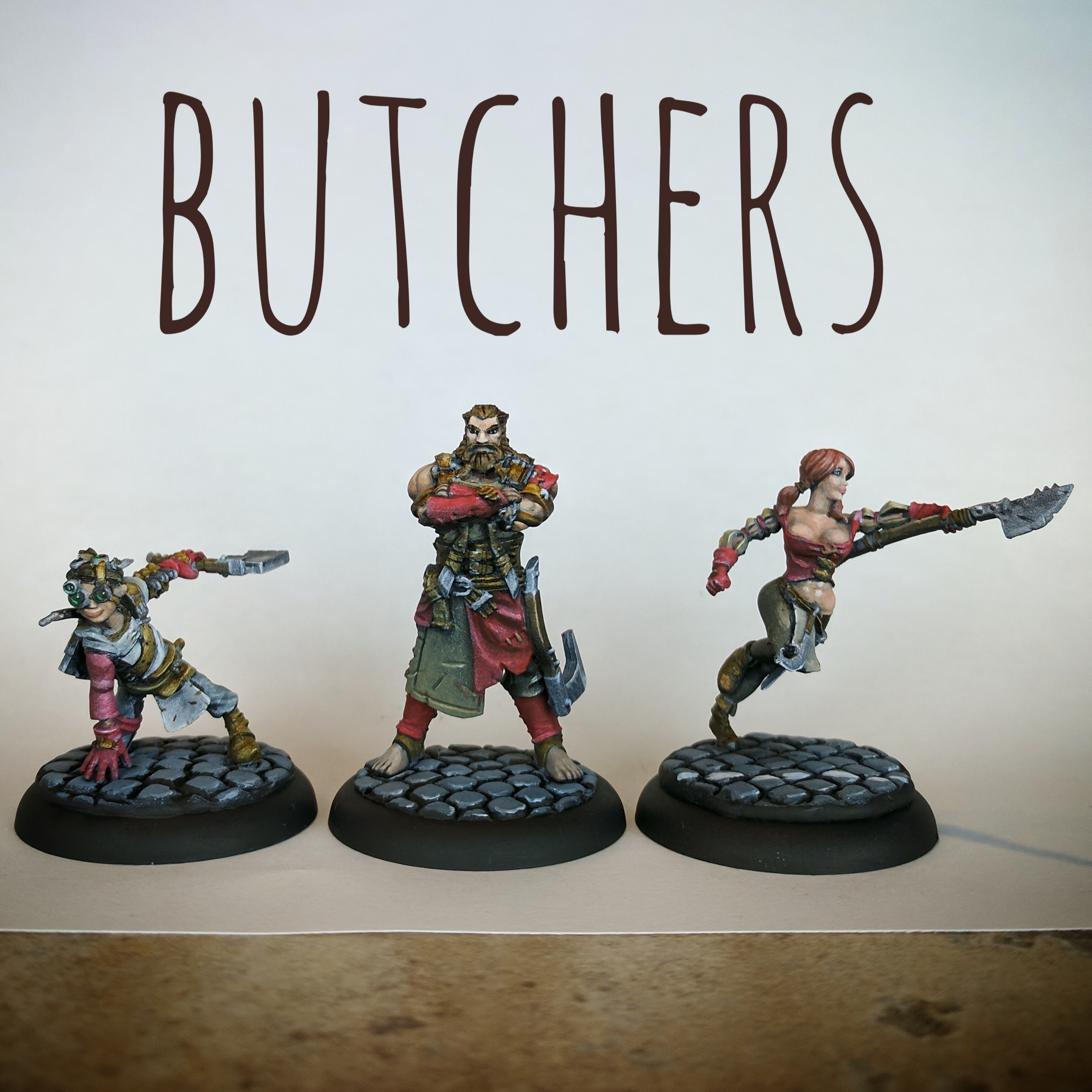
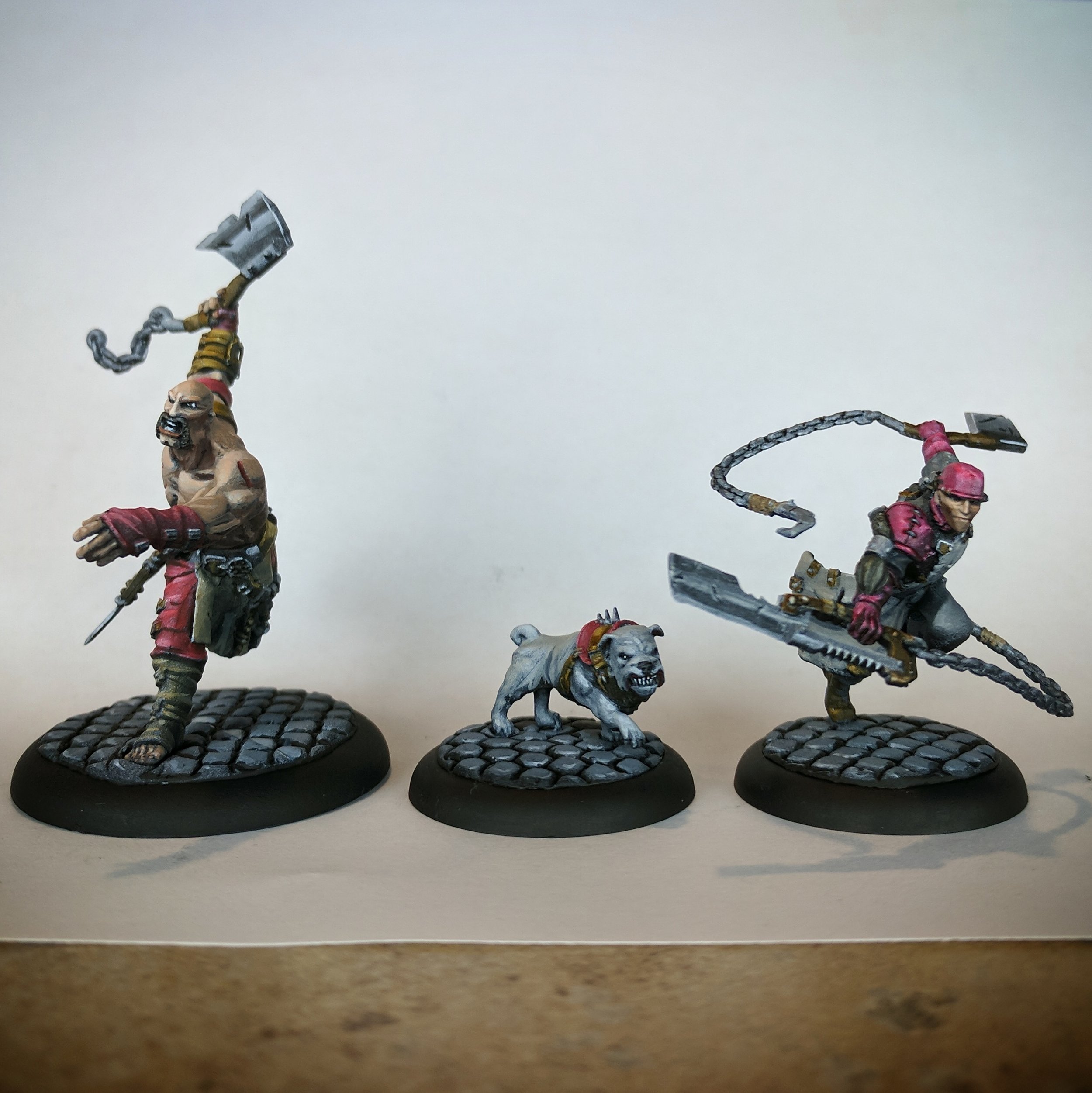
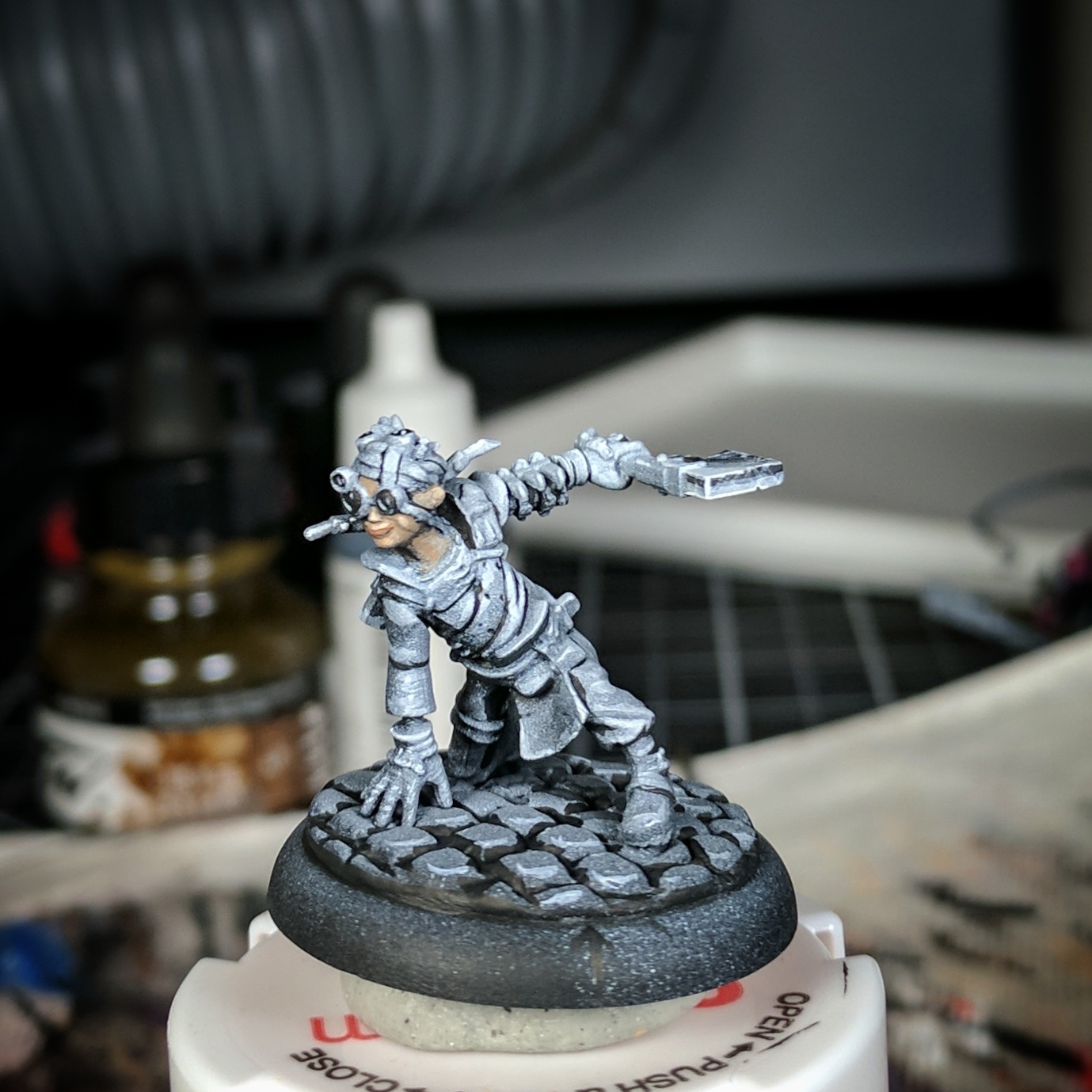
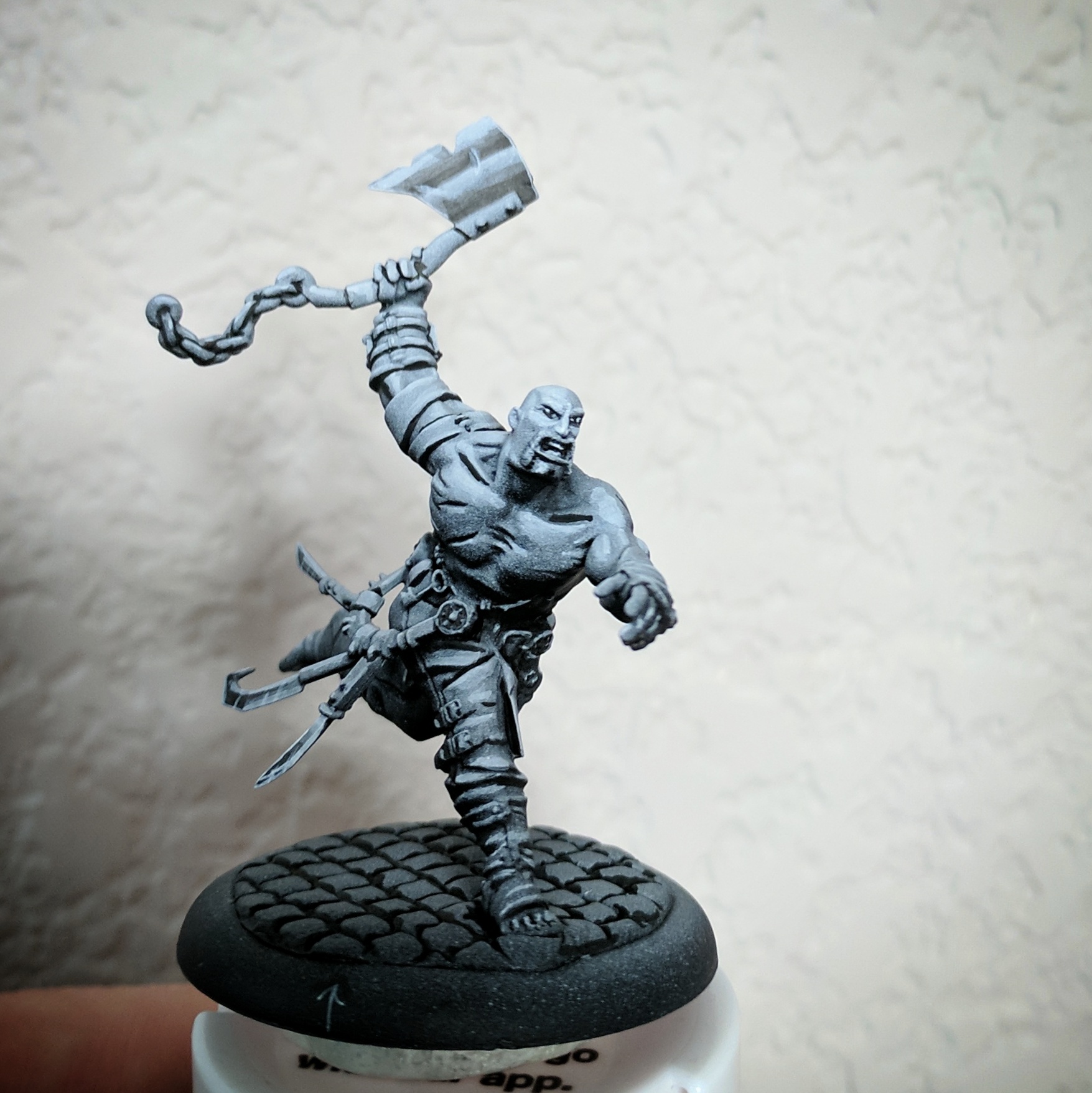
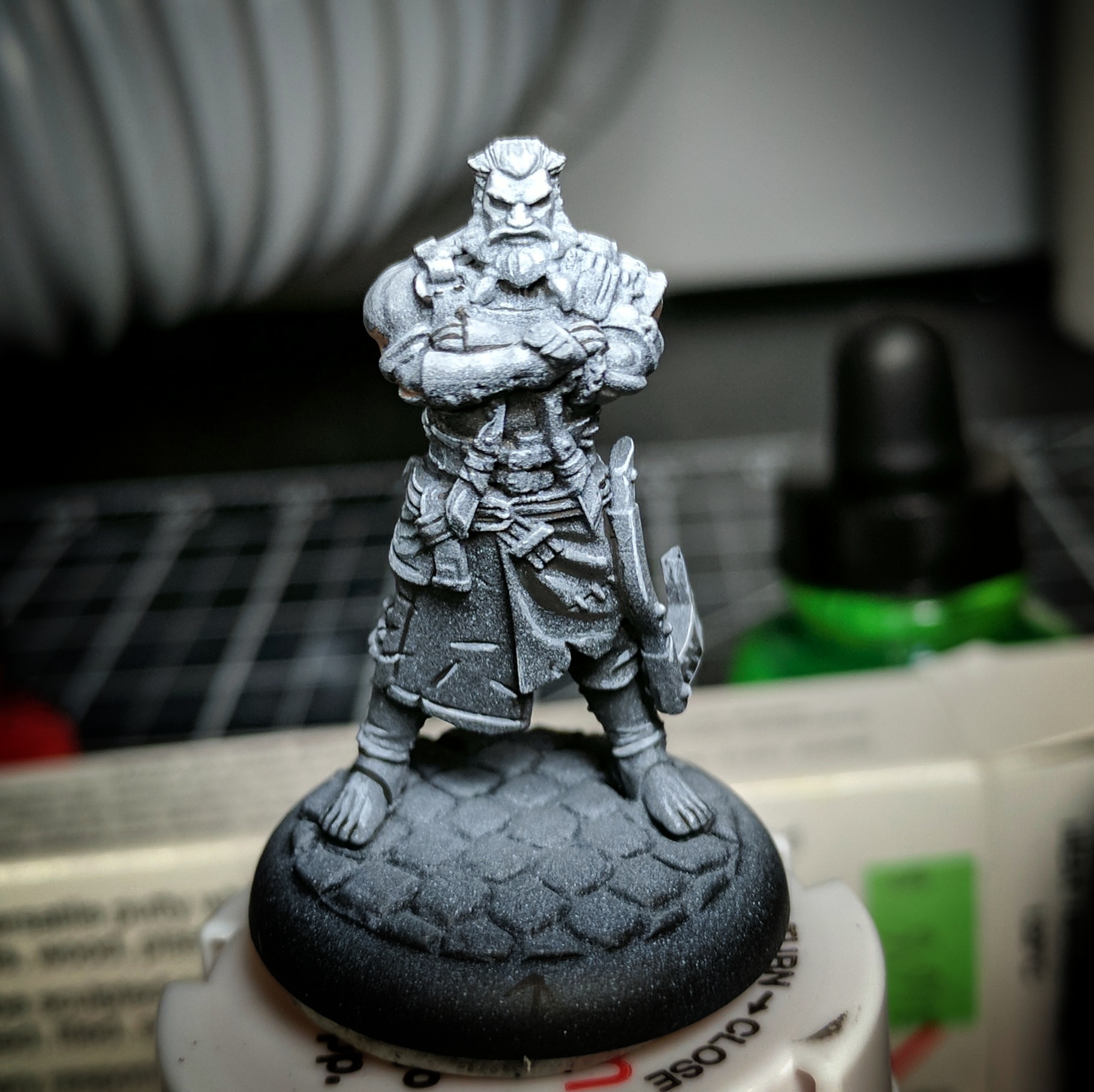
The results speak for themselves. For me, the most important result is number of models painted. In the month since I started Sketch Style, I've painted 30 models. Basically one per day. Sure, there are 8 cheater models in there that are significantly smaller, but there are also 7 larger-than-average sized models. I think it evens out.
Part of the reason that so much was painted is that the approach is fun. It allows for rapid progress, and just sitting down for an hour or less to complete a sketch is satisfying.
That's 259 models down, only 738 to go... But this elephant is going to get eaten one lead-filled bite at a time...
